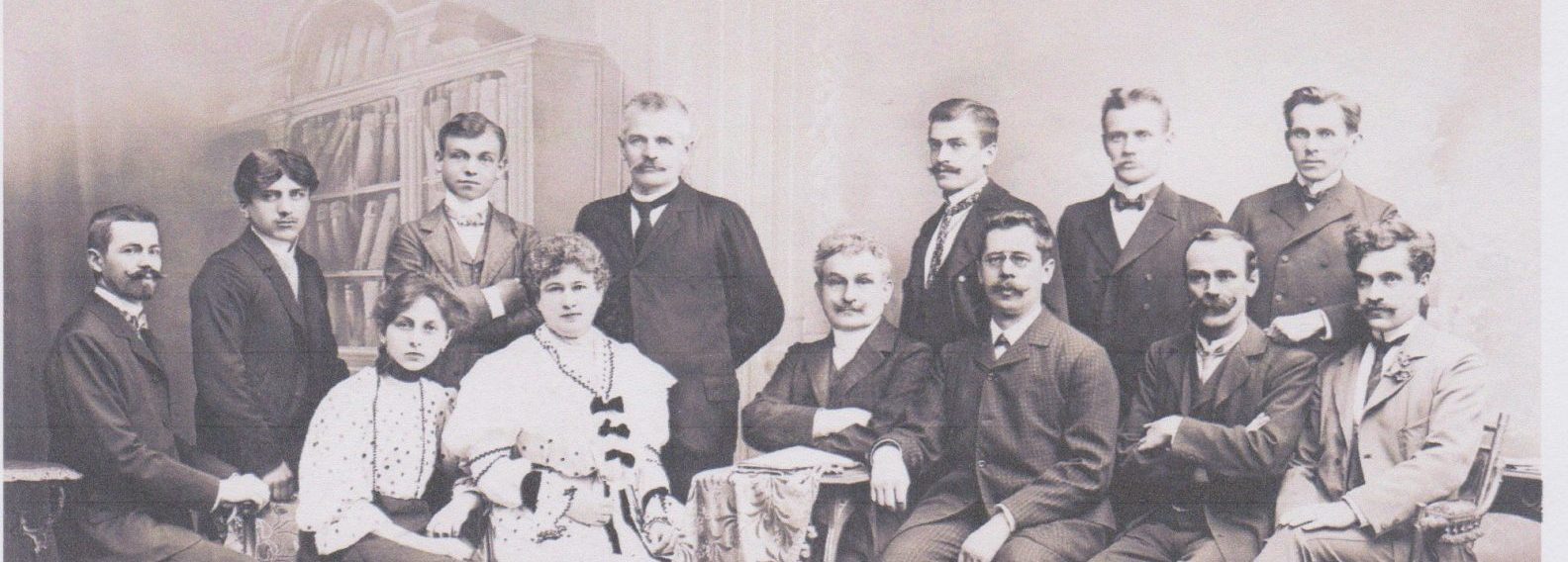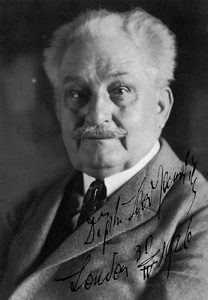
In the picture at the top of the page: Leoš Janáček with professors from the pipe organ course in 1905-1906. Marie Kuhlová is seated to the left of Leoš Janáček, Max Koblížek to the right. 1906 Rafael Studio. Property of The Moravian Library.

Leoš Janáček is one of the most remarkable figures not only in Czech but also in world music culture. Born on July 3, 1854, in Hukvaldy as the ninth child of a rural teacher, he came to Brno at the age of eleven to receive a thorough musical education at the Old Brno Monastery Foundation, and he spent his entire life in Brno. From the 1870s onwards, he was involved in systematic educational, organizational, pedagogical, and artistic activities in this then provincial city, alongside his own compositional work. Janáček’s early compositional work was influenced by his study of Moravian folklore and, a little later, by his interest in the psychological aspects of human speech. On this basis, his distinctive style of musical expression crystallized, characterized by the brevity of musical ideas and the sharp contrast between their combinations.
Janáček’s main field of activity was opera. The composer wrote nine operas, the third of which, Jenůfa, took nine years to complete and waited a long time for recognition – just like the composer himself. However, after its premiere at the National Theater in Prague in 1916 and in Vienna in 1918, it established Janáček’s worldwide fame. It was only then, in the last decade of his life, when Janáček finally received recognition for his work, that he created his most significant works in quick succession, fundamentally enriching the repertoire of opera houses (Káťa Kabanová, The Cunning Little Vixen, The Makropulos Affair, and From the House of the Dead) and concert stages (The Diary of One Who Disappeared, two string quartets, the wind sextet Youth, Sinfonietta, Glagolitic Mass, and many others). The composer died on August 12, 1928, in Ostrava and is buried in the Central Cemetery in Brno in the circle of honor.
What does Janáček’s legacy mean today, not only in higher education? This legacy of musical genius and patron of the Brno academy was not the only reason for our conversation with Jiří Zahrádka, a leading Czech expert on Janáček’s life and work. We talked about everything that remains of the composer’s legacy today and how this legacy affects us, not only at JAMU but also in higher arts education in general. Leoš Janáček died of pneumonia on August 12, 1928, in Moravská Ostrava at the age of 74. The first decade of the young Czechoslovak Republic thus ended with the passing of an extraordinary artist who was born during the monarchy but who had been very keen on the creation of an independent state and a higher music school in Brno throughout his life. A great Russophile, he finally lived to see an independent art school established. After the establishment of the Czechoslovak Republic, the 65-year-old Janáček immediately realized that the new political situation allowed for the establishment of a music conservatory in Brno. The Janáček Academy of Music and Performing Arts has proudly borne the patronage of this genius in its coat of arms since its establishment in 1947.
Of course, for two reasons. Firstly, we still benefit from his achievements today – for example, music education in Brno would have developed later without Janáček’s lifelong hard work and would probably be much more modest today. But the main thing is, of course, Janáček’s work. It seems to me that finally, almost 100 years after the composer’s death, everyone has realized that we are dealing with the work of one of the world’s most important composers, and not only of the 20th century. In Brno, this is evidenced, for example, by the Janáček Brno festival, which traditionally attracts many foreign visitors, or the recent inclusion of the Leoš Janáček Archive of the Moravian Museum in the UNESCO Memory of the World Register.